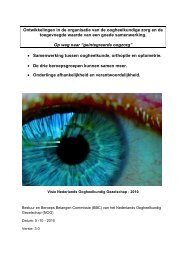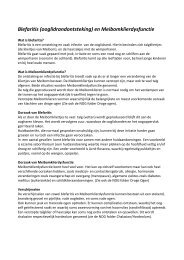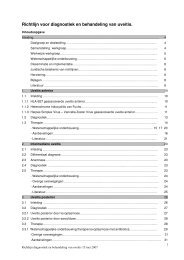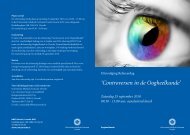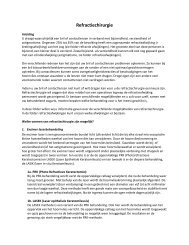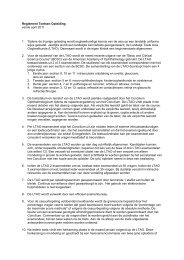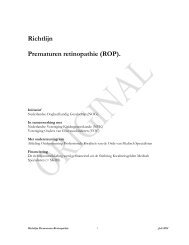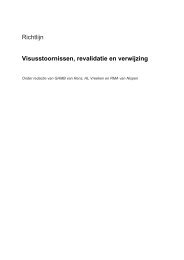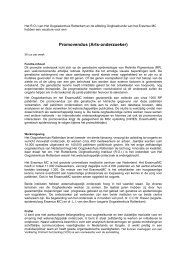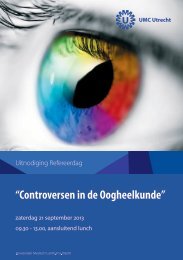terminology and guidelines for glaucoma ii - Kwaliteitskoepel
terminology and guidelines for glaucoma ii - Kwaliteitskoepel
terminology and guidelines for glaucoma ii - Kwaliteitskoepel
You also want an ePaper? Increase the reach of your titles
YUMPU automatically turns print PDFs into web optimized ePapers that Google loves.
OCCLUDABLE ANGLE:<br />
“Occludable” is not an objective evidence - based finding but a clinical diagnosis. Since an occludable angle is<br />
defined as one that has high risk of closure, it must be treated with iridotomy/iridectomy to eliminate the pupillary<br />
block component.<br />
If the iridotomy is patent, should the angle not deepen, iridoplasty may be considered, depending on the main<br />
mechanism underlying the risk of angle occlusion. Topical pilocarpine or dapripazole treatment should be considered<br />
whilst awaiting iridotomy / iridectomy.<br />
NARROW ANGLE:<br />
The term “narrow angle <strong>glaucoma</strong>” does not describe whether the main cause of IOP increase is primary<br />
impairment of trabecular outflow facility or mechanical obstruction of the trabeculum by iris apposition or synechial<br />
closure. Both mechanisms may co-exist in an eye with a narrow anterior chamber angle. There<strong>for</strong>e the<br />
term “narrow angle <strong>glaucoma</strong>” should be avoided as non-specific.<br />
If an occludable angle is present (i.e. in addition to POAG), this should be referred as POAG with an occludable<br />
angle or with risk of angle-closure (See also Ch. 2.4.3).<br />
If intermittent angle-closure is present, the condition should be considered, <strong>and</strong> treated, as angle-closure <strong>glaucoma</strong>.<br />
If a case of POAG has a narrow angle, it should be labeled as POAG with narrow angle approach.<br />
Ch. 2 - 17 EGS



